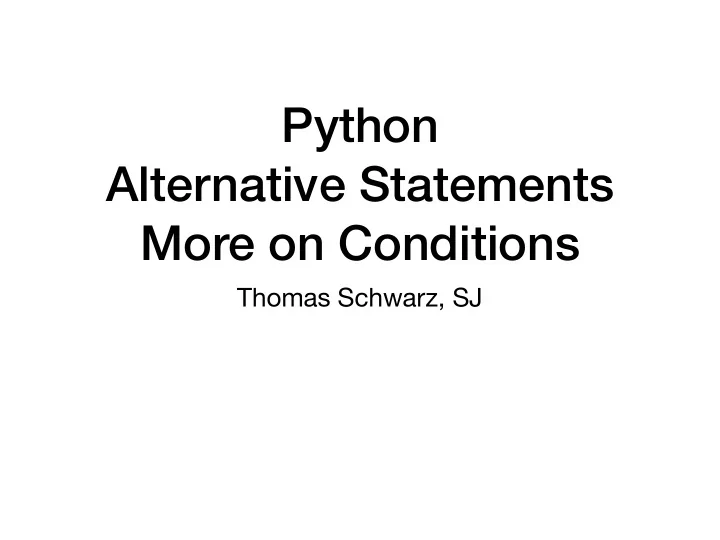

Python Alternative Statements More on Conditions Thomas Schwarz, SJ
Conditions • A condition is an expression that evaluates to True or False • This type is called Boolean
Boolean Expressions • The simplest Boolean expressions are True and False • The next simplest class are numerical comparators • < smaller • > greater • == equals (Two! equal symbols) • != not equals • <= smaller or equal • >= larger or equal
Boolean Expressions • We can combine Boolean expressions using the logical operands • and • or • not • If necessary, we can add parentheses in order to specify precedence
Boolean Expression Examples • A program that decides whether user input is divisible by 2, but not by 3.
Boolean Expression Example • A program that checks whether the letter “a”, “A”, “e” or “E” is part of user input. • Python allows the keyword “in” to check for the presence of letters in strings.
Short-Circuit Operators • The value of an “or”- or “and” expression is evaluated from the left to the right • If the first operand of an “or” is True, then the second operand is not evaluated and True is returned. • This is because the value of the expression is already known • Similarly, if the first operand of an “and” expression is False, then the second operand is not evaluated and the value of the expression is False.
Conversion of other expressions • Any object can be tested for a truth value. • The truth value of a non-zero number is True, otherwise False. • Example: • Since 5%2 evaluates to 1, it’s truth value is True and the conditional statement ( print(…) ) is executed • This behavior extends to other type of objects such as strings • The empty string “” has truth value 0, every other string has truth value 1.
Recommend
More recommend